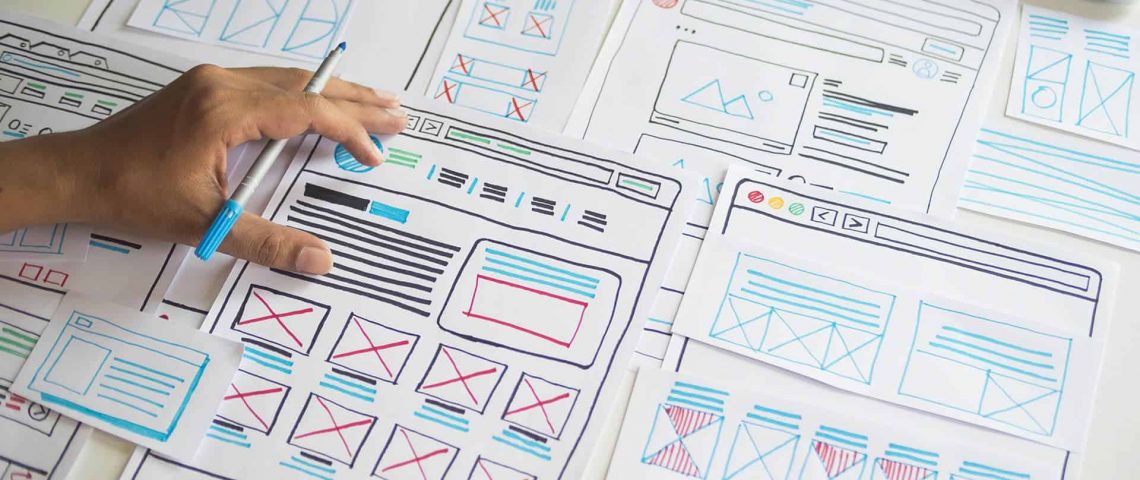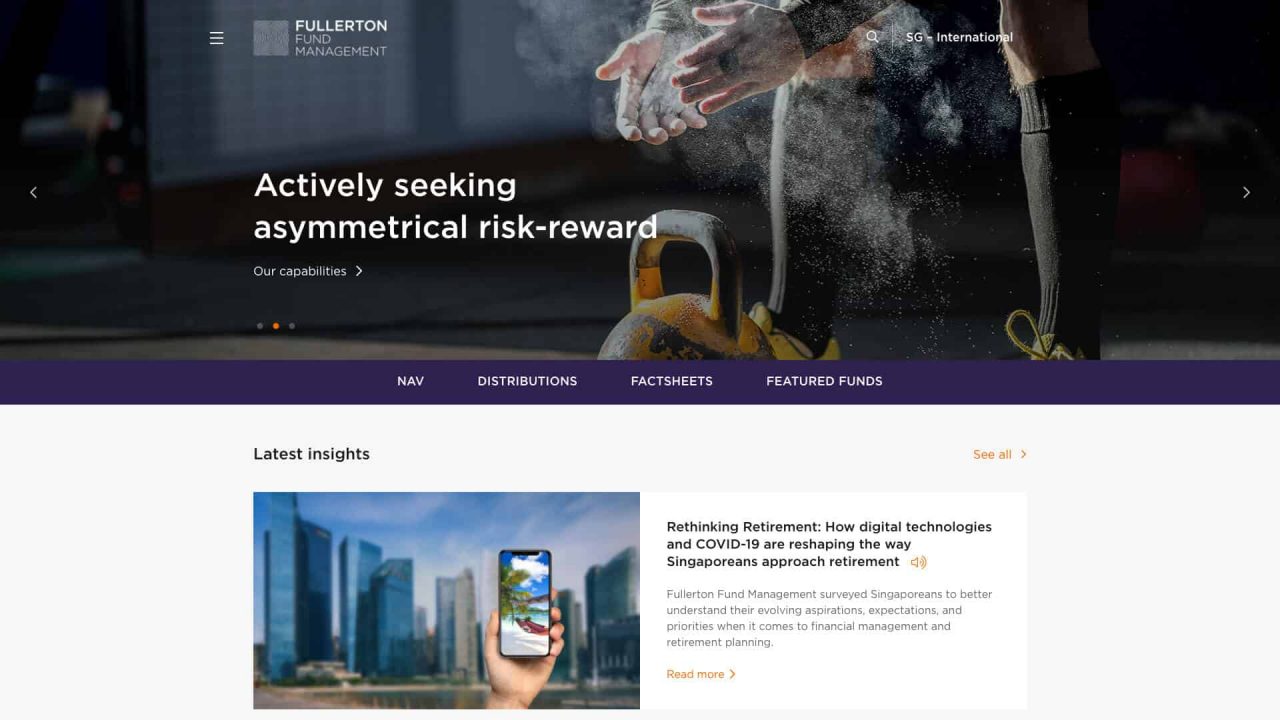
When it comes to website design in Singapore you can expect high quality at reasonable prices. There are plenty of services to choose from to create your new business website from scratch, or enhance the quality and user experience of your existing site.
As a freelance WordPress developer in Singapore Chillybin has the skills and expertise to cover a wide range of website design and development resources that can be used as either stand-alone services or combined in a package that can develop, nurture and boost your website offering, to get maximum benefit for yourself and your customers.
Operating in Singapore we have a winning combination of highly skilled team members, which makes us a great choice if you are planning to build a professional website for your business or revamp your existing one.
Trying to determine what services are out there and which ones you need to employ can be overwhelming. This blog will help you better understand the terminologies commonly used in WordPress development and design so you can get a solid handle on where to start researching and what to discuss with your potential consultants when taking steps towards solving your website issues.
See How Chillybin Web Design Can Drive Massive Amounts of Traffic to Your Website
- SEO – drive people who are ready to buy directly to your website.
- Content Marketing – our team of native-English speaking writers will craft articles that position you as THE authority in your niche.
- Paid Media – pour fuel on the fire with paid ads that produce a steady stream of leads for your business.

Table of Contents
Common Website Design Terms and Offered Services
Design
Website design refers to creating the look and flow of a number of pages of a website, either from scratch or from a template. It includes page colours, images, videos, graphics, sound, photos, texts, buttons, scrollers, links to social media and menus, just to name a few.
What a website designer in Singapore can do is just about limitless, although download speed should be an aspect your designer takes into strong consideration. All the bells and whistles won’t amount to much if your website is painfully slow and gives a poor user experience…
The design of a website will take into account a lot of aspects so that the end result can effectively deliver on a number of key features:
- Attract and maintain user attention
- Highlight a business brand
- Create or increase brand familiarity
- Correctly represent what is being sold
- Guide a user through the steps and information provided
- Provide evidence of authenticity
As well as having an in-depth discovery session to learn what your preferences are for your website design, even if it’s only a general idea, say, of something light and dreamy, or something vivid and powerful, we will also take into account your business branding. The colours, fonts and logos you use every day as part of your company will work exceptionally well for creating brand awareness and establishing authenticity for your online business.
We also find that photos of your business, stock and staff are so much more appealing and genuine to your visitors than standard stock images.
How many pages your website has and what those pages look like will be driven by your unique needs and preferences.
A typical website will include a number of pages that a website designer creates in harmony to work and flow together such as:
- Home Page
- Contact Us
- Blogs
- Services
- Case Studies
- About Us
Photoshop is one of the best and well-used platforms for designing website pages as it is able to deliver incredible detail with high quality and great flexibility to customise to our clients’ needs.
For the application of Photoshop to be successful, our team members must be accomplished masters of user interface and multimedia design.
In order for an online business to be successful and engaging, it must be able to make a powerful and positive first impression in less than eight seconds. The design of your website is essential to get right. In order to convert your leads, you need them to stay online and continue to engage.
Some extra elements to keep in mind for modern website design efficiency

User Experience (UX)
User Experience (UX) is growing in importance. Not only in terms of generating high-quality leads and conversions, but also in terms of ticking the boxes for search engine algorithms.
What UX takes into consideration is how much satisfaction your visitors receive from using your page. This works on creating a seamless experience from start to finish where you direct your user to their end goal, rather than supply large amounts of information for them to wade through at their leisure.
People are looking for a result, and fast.
By catering to what your user is looking for you will be able to meet these needs, and meet them quickly, increasing their satisfaction with your services and brand and giving them a positive experience online.
The last thing you want to do with your website design is leave visitors feeling frustrated, confused or unsafe. Any one of these responses will result in a bounce.
UX design looks into download speed, interaction speed and well-placed action steps, to reduce the bounce rate (number of visitors who leave the site immediately) and increase interaction time.
High-Intensity Design
Interactive Website Design, also called Creative Web Design, are crafted web experiences with increased impact for visitors. Basically, they go above and beyond typical user expectations to deliver a site that people love to view.
You can increase your engagement level and keep visitors coming back with Interactive Websites. If this is your focus, expect to invest some money to make this as vibrant and sleek as possible.
Most business websites (corporate websites) aim to give the user enough information about who they are and what they do to take one more step into the website, and the process is repeated on the child pages that follow.
A normal business website won’t expect or design a home page to be viewed multiple times. The usual trend is for users to arrive at the home page from a search engine list, direct link or trackback after viewing a landing page.
They then click through and wouldn’t normally have any need to go back to that home page.
Interactive websites dip heavily into art and high-class advertising to display something that you’d usually see from the really big brands, like Nike or Coca Cola. These are pages that beg to be revisited, saved and shared. It’s far more than just an introduction to a website, it’s a statement.
Strong visuals and captivating media are used to encourage visitor engagement and increased browse time.
Examples might include 360-degree views, virtual tours and before-and-after type displays, however, many highly interactive websites achieve their success with exceptional art, stunning photography, gripping one-line text or subjects that reach viewers on a much deeper level of heart, society or satire.
Typically the type of businesses that use these sites are those who want subscribers rather than clients to contact them or products purchased in a shopping cart.
So that naturally brings us to a conversation about what kind of website you actually need for your business. Here is a rundown of the most common types of business websites available.

Different Types of Websites
1. Corporate Websites
The Corporate Website is the most common website type. Just about every business has one of these. As mentioned above, the goal of a corporate site is to hand information over to users in simple, clear and relatable ways, guiding them to an end goal that is mutually beneficial for everyone. ‘Employ our services and we’ll take care of it for you’ is the message they convey.
What a business owner is looking for is for the reader to reach out and make contact. The call to action on these websites is usually a contact us form, general enquiry form or a direct link to call or book an appointment.
Other options might be to submit online applications for employment. Most corporate sites also use chat boxes as well to allow users to interact and get basic feedback instantaneously online.
2. eCommerce
For those who have an online shop, you will need to take your corporate website to the next level with an eCommerce website. With these types of websites, the contact us form or general enquiry form are placed as secondary actions. The primary action in these cases is to add a product to the cart and proceed to the checkout.
The additional features you can expect to add are:
- Product Inventory
- Shopping cart
- Add to cart function
- Recently viewed items
- Secure payments
- Top-selling or favourite buys
- And sales reports, to name a few
Because every online store will be different, every design will be unique.
Most platforms are flexible enough to offer customisable templates. Do make sure the website designer you use has experience with eCommerce as this is a complex one.
With eCommerce sites, the most important thing is the links and programming flow.
This needs to be high-quality design, with robust WordPress development, or a customer’s purchase will not proceed smoothly. When executed correctly, you can receive money into your account and your products can be purchased 24/7. That means you’ll be earning while you sleep.
Your shopping cart is definitely an area where it’s worth spending the money to get it perfect.
Before you get started, know what your number one priority is for your online business going forward, is it rapid growth, or is it a user- friendly shopping experience? Knowing this will help determine what type of platform will be best suited to your business needs.

Responsive web design
A responsive web design refers to a layout that is flexible enough to run across a number of different devices. You want your information to reach your visitor no matter where they are or what their viewing preferences are. That’s why your website designer will look at how your web page displays across desktops, smartphones and tablets.
This not only includes the visual layout but also the addition of touch-friendly buttons and scrolling in both portrait and landscape view. It’s a lot to take into account, but well worth it when you consider the extended reach you have as well as ticking the right boxes on Google’s search algorithms.
What if the website you want doesn’t exist?
Believe it or not, new websites are being born every day. As the internet expands and more and more businesses come to rely heavily on online communications, new website types are being discovered almost every day.
With website design anything is possible. It’s just a matter of creating what you need.
It’s difficult to imagine now, but not too long ago websites like property listings, education portals, shopping carts and food catering services didn’t have dedicated templates.
Only through pushing through and utilising Custom Programming Services, were these types of sites created to meet the unique needs of their owners and users.

Programming Types
Most of the above listings are relatively easy to understand and there are literally thousands of working examples online that you can browse and get to know better.
What is harder to see and understand is the programming that runs in the background.
This is where terms can get complex and overwhelming, so we’ll walk you through the main programming types that you may encounter in your search for your website designer or WordPress developer in Singapore.
All websites need programs to run. The more elaborate your website, the more complex the coding will be.
There are two main program types, which typically work hand in hand to deliver seamless website performance.
1. HTML programming
HTML stands for Hypertext Markup Language. This background is like the skeleton on your website. It’s the supporting structure that defines how your information will display and function.
If a text is a heading, if you want a new line, where you want an image to sit on the page, is all listed in the HTML background.
HTML uses very simple language and repetitive phrases that are predictable and consistent, providing your website content and structure doesn’t change around too much, which means you don’t need to have a strong tech background to work it out.
In fact, anyone can show and alter their HTML text with admin access. This is an easy and recommended step for a business to take on once the site has been completed.
Your website designer will create HTML text from scratch when writing your website, unless you have a corporate website that includes an unusually high volume of pages, say in excess of 30.
In this case, the most effective way forward would be to create an HTML template for your brand’s look and feel which can be used in a Content Management System like WordPress (which uses PHP Programming) to generate pages quickly.
For this reason, it’s best to use a website design company that is flexible over both HTML and PHP. As well as uploading custom templates into Content Management Systems, they can also use the complex PHP wording within WordPress and other systems and convert it into HTML ready for you to use on your own.
2. PHP Programming
PHP Programming stands for Hypertext Preprocessor. While anyone proficient in coding is able to write their own code and make their own programs, PHP is the universal scripting language that is known by, and accepted by just about every public platform. It is especially suited for web development for commercial, open user websites,
You can expect that any business website would be built with both HTML and PHP programming.
This is chosen text used for complex commands and highly interactive websites, as well as Content Management Systems, like WordPress.

Copywriting
Copywriting Services refer to content creation. Quality content is written in a way that is relevant, engaging and persuasive. A copywriter has the skills to apply the right words at the right time to create impact and evoke emotion.
It’s important to make sure the content you provide on every one of your pages speaks professionally and paints your business in an authentic light, true to your business values and service offerings.
As well as information displayed on your website’s pages, you can employ copywriters for your landing pages, blogs, emails, newsletters, ads and social media posts.
Your voice is the most important of all.
You know your business and understand why you are here and what you have to offer better than anyone. That is why you play a key role in deciding how your website will look and perform.
The more involvement you have in this process, the more genuine your user’s experiences will be. They can go from exploring your website to speaking with your team, and feel the experiences match and reflect each other.
That is why it’s essential that you understand the base terms of our website design services in Singapore, so you have an idea of how to respond to questions or ask some of your own, and be part of the journey.




